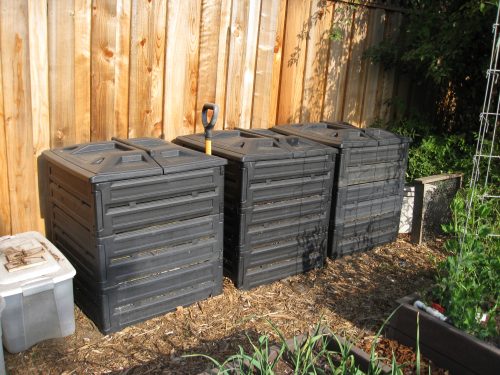Another great question came in this week:
“Hello, I have a worm bin that I use to throw all my compostable items in
such as veggies,eggshells, paper etc. I also have a big compost bin
next to my worm bin, it is about a quarter full. I throw junk mail and
grass clippings, tree clippings, whatever is too big for my worm bin
goes in this big bin. Could I add worms to this big bin as well to aid
in the speed of the composting process? My second question is: I have a
huge back yard on a slope, its mostly shaded throughout the day, what
would you suggest growing in a shady area as far as vegetables?”
Congrats on having both a worm bin and compost bin. I think they both really support the garden wonderfully. Now, let’s get to those questions:
1) Yes, you can add worms to your compost bin. They love it in there. They will tend to move away from the hot part of the compost pile since they don’t like heat, but they will keep working on your pile even after it cools down. Our worm bin became a little crowded, so we harvested a bunch of worm castings and worm and dumped them all in the compost bin to integrate them together. The result has been a fantastic, black gold compost teeming with worms. We add the sifted compost (which the worms fall right through) straight to the garden, so then we have worms in the garden beds. All the better!
2) Growing vegetables in the shade is a challenge. Most vegetables require at least 6 hours of direct sunlight per day. Shady areas that get some sunlight might be able to support strawberries or lettuces, especially in the summer when our California heat is too much for lettuces. Here is an article I found by a fellow garden colleague about other veggies that can be grown in shady spaces:




Okay, here’s the scoop on earthworms:
The northern states in the U.S. have no native earthworms – they were all wiped out about 11,000 years ago when the glaciers receded. What’s been happening, apparently, is that the northern forests are being “invaded” by non-native earthworms that are eating up the “duff” layer of fallen leaves on the forest floor, which then leads to deforestation. Cindy Hale, a researcher at University of Minnesota, did a study to discover this problem, and that’s why it’s in the news lately.
Basically the problem is increasing because people are dumping their leftover fishing bate in the woods when they finish up for the day. Cindy says that since earthworms, “by themselves only travel a few meters a
year. You do the math—it would take them about a hundred years to travel
a quarter-mile.” The situation would dramatically reduce if people were just more careful about where they release their worms.
So if you live south of the northern states, you have nothing to worry about. If you live in the northern states, just be cautious about scattering your worms if you live in the woods.
I have worm bins and have been adding castings and worms to our garden.
Someone told me a forest north of CA is dying because of these worms getting out of their bins. They multiply quickly and eat the natural ground cover.
Should these worms be kept out of our gardens?